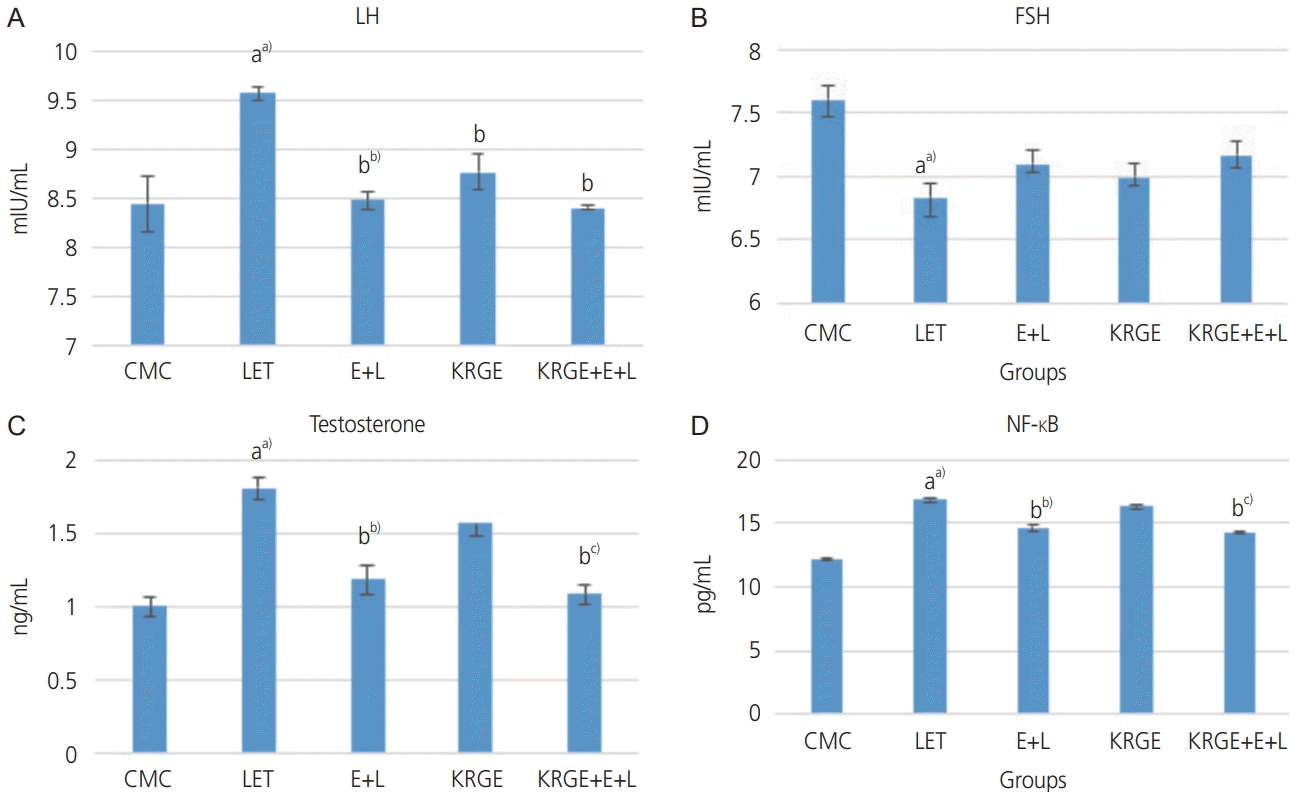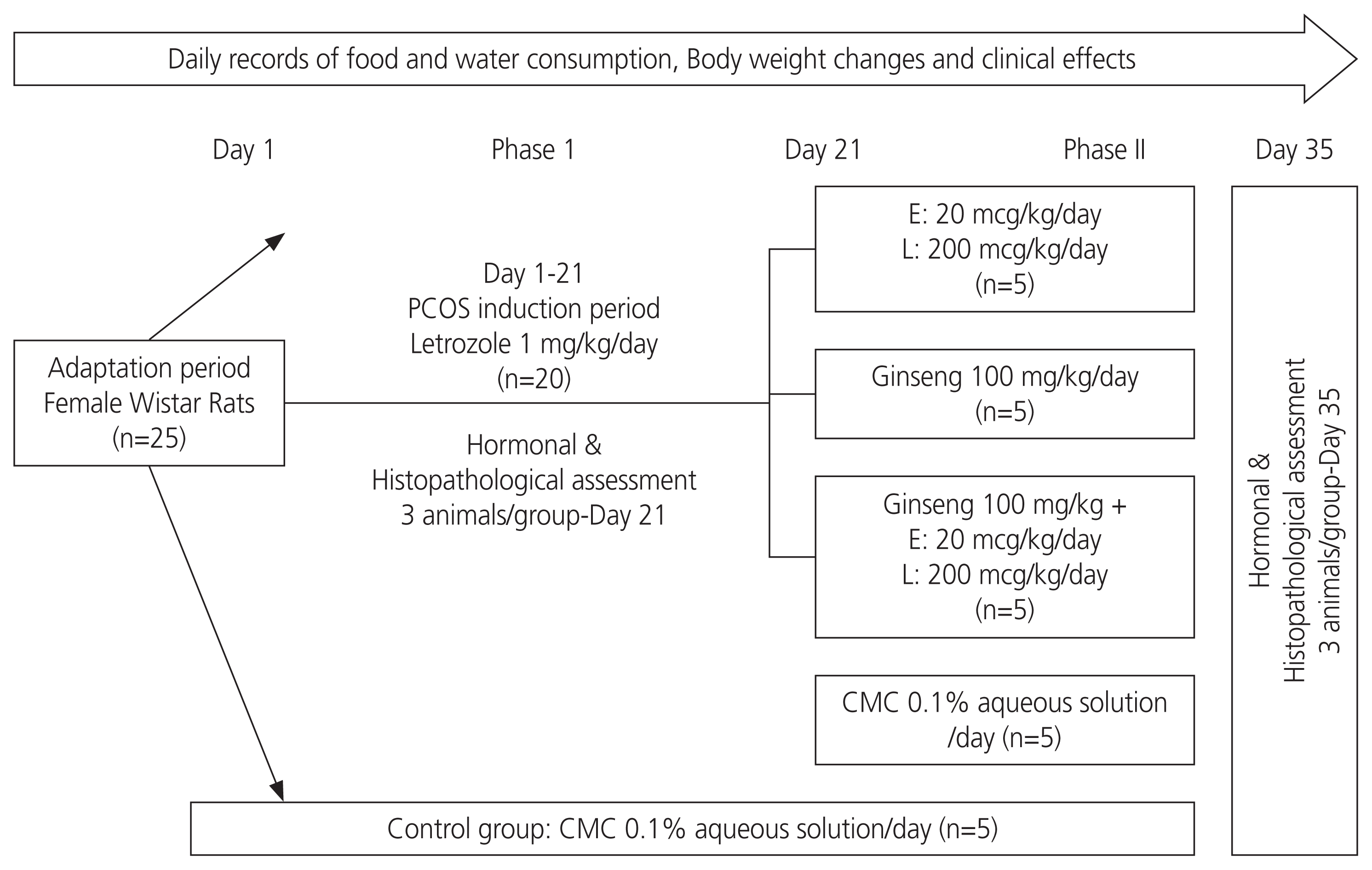1. Walters KA, Gilchrist RB, Ledger WL, Teede HJ, Handelsman DJ, Campbell RE. New perspectives on the pathogenesis of PCOS: neuroendocrine origins. Trends Endocrinol Metab. 2018; 29:841–52.

2. Yildiz BO. Oral contraceptives in polycystic ovary syndrome: risk-benefit assessment. Semin Reprod Med. 2008; 2:111–20.

3. Victor VM, Rocha M, Bañuls C, Sanchez-Serrano M, Sola E, Gomez M, et al. Mitochondrial complex I impairment in leukocytes from polycystic ovary syndrome patients with insulin resistance. J Clin Endocrinol Metab. 2009; 94:3505–12.

4. Teede HJ, Misso ML, Deeks AA, Moran LJ, Stuckey BG, Wong JL, et al. Assessment and management of polycystic ovary syndrome: summary of an evidence-based guideline. Med J Aust. 2011; 195:S65–112.

5. Damone AL, Joham AE, Loxton D, Earnest A, Teede HJ, Moran LJ. Depression, anxiety and perceived stress in women with and without PCOS: a community-based study. Psychol Med. 2019; 49:1510–20.

6. Behboodi Moghadam Z, Fereidooni B, Saffari M, Montazeri A. Measures of health-related quality of life in PCOS women: a systematic review. Int J Womens Health. 2018; 10:397–408.

7. Palioura E, Diamanti-Kandarakis E. Polycystic ovary syndrome (PCOS) and endocrine disrupting chemicals (EDCs). Rev Endocr Metab Disord. 2015; 16:365–71.

8. Zuo T, Zhu M, Xu W, Wang Z, Song H. Iridoids with genipin stem nucleus inhibit lipopolysaccharide-induced inflammation and oxidative stress by blocking the NF-κB pathway in polycystic ovary syndrome. Cell Physiol Biochem. 2017; 43:1855–65.

9. Escobar-Morreale HF, Luque-Ramírez M, González F. Circulating inflammatory markers in polycystic ovary syndrome: a systematic review and metaanalysis. Fertil Steril. 2011; 95:1048–58.e1.

10. Liu M, Gao J, Zhang Y, Li P, Wang H, Ren X, et al. Serum levels of TSP-1, NF-κB and TGF-β1 in polycystic ovarian syndrome (PCOS) patients in northern China suggest PCOS is associated with chronic inflammation. Clin Endocrinol (Oxf). 2015; 83:913–22.

11. Nehir Aytan A, Bastu E, Demiral I, Bulut H, Dogan M, Buyru F. Relationship between hyperandrogenism, obesity, inflammation and polycystic ovary syndrome. Gynecol Endocrinol. 2016; 32:709–13.

12. Sirmans SM, Weidman-Evans E, Everton V, Thompson D. Polycystic ovary syndrome and chronic inflammation: pharmacotherapeutic implications. Ann Pharmacother. 2012; 46:403–18.

13. Zaafan MA, Abdelhamid AM, Ibrahim SM. The protective effect of Korean red ginseng against rotenone-induced Parkinson’s disease in rat model: modulation of nuclear factor-κβ and caspase-3. Curr Pharm Biotechnol. 2019; 20:588–94.

14. Kim SJ, Kwak HJ, Kim DS, Choi HM, Sim JE, Kim SH, et al. Protective mechanism of Korean red ginseng in cisplatin-induced ototoxicity through attenuation of nuclear factor-κB and caspase-1 activation. Mol Med Rep. 2015; 12:315–22.

15. Choi JH, Jang M, Nah SY, Oh S, Cho IH. Multitarget effects of Korean Red Ginseng in animal model of Parkinson’s disease: antiapoptosis, antioxidant, antiinflammation, and maintenance of blood-brain barrier integrity. J Ginseng Res. 2018; 42:379–88.

16. Shim MK, Lee YJ. Estrogen receptor is activated by Korean red ginseng in vitro but not in vivo. J Ginseng Res. 2012; 36:169–75.

17. Najaf Najafi M, Ghazanfarpour M. Effect of phytoestrogens on sexual function in menopausal women: a systematic review and meta-analysis. Climacteric. 2018; 21:437–45.

18. Korea Ginseng Corp. Korean red ginseng extract, ginseng root, tea, capsule [Internet]. Seou (KR): Ginseng Corp.;c2020. [cited 2019 Oct 31]. Available from:
https://www.kgcus.com/
.
19. Jung JH, Park HT, Kim T, Jeong MJ, Lim SC, Nah SY, et al. Therapeutic effect of Korean red ginseng extract on infertility caused by polycystic ovaries. J Ginseng Res. 2011; 35:250–5.

20. Kafali H, Iriadam M, Ozardali I, Demir N. Letrozole-induced polycystic ovaries in the rat: a new model for cystic ovarian disease. Arch Med Res. 2004; 35:103–8.

21. Fernández-Martínez E, Pérez-Soto E, González-Hernández C, Ortiz MI, Pérez-Álvarez V, Muriel P, et al. Immunomodulatory effects by oral contraceptives in normal and cholestatic female rats: role of cytokines. Int Immunopharmacol. 2014; 21:10–9.

22. Mahsa S, Naeimeh D, Hamed DP, Hossein K, Nazanin SJ. Comparison of ginseng extract and metformin on improvement of polycystic ovary syndrome (POS). J Entomol Zool Stud. 2015; 3:501–5.
23. Baravalle C, Salvetti NR, Mira GA, Pezzone N, Ortega HH. Microscopic characterization of follicular structures in letrozole-induced polycystic ovarian syndrome in the rat. Arch Med Res. 2006; 37:830–9.

24. Chung HS, Hwang I, Oh KJ, Lee MN, Park K. The effect of Korean red ginseng on sexual function in premenopausal women: placebo-controlled, double-blind, cross-over clinical trial. Evid Based Complement Alternat Med. 2015; 2015:913158.

25. Oh KJ, Chae MJ, Lee HS, Hong HD, Park K. Effects of Korean red ginseng on sexual arousal in menopausal women: placebo-controlled, double-blind crossover clinical study. J Sex Med. 2010; 7:1469–77.

26. Sun YF, Zhang X, Wang XY, Jia W. Effect of long-term intake of ginseng extracts on gut microbiota in rats. Zhongguo Zhongyao Zazhi. 2018; 43:3927–32.
27. González F, Rote NS, Minium J, Kirwan JP. Increased activation of nuclear factor kappaB triggers inflammation and insulin resistance in polycystic ovary syndrome. J Clin Endocrinol Metab. 2006; 91:1508–12.
28. Koc O, Ozdemirici S, Acet M, Soyturk U, Aydin S. Nuclear factor-κB expression in the endometrium of normal and overweight women with polycystic ovary syndrome. J Obstet Gynaecol. 2017; 37:924–30.

29. Xu Y, Ding J, Ma XP, Ma YH, Liu ZQ, Lin N. Treatment with Panax ginseng antagonizes the estrogen decline in ovariectomized mice. Int J Mol Sci. 2014; 15:7827–40.







 PDF
PDF Citation
Citation Print
Print




 XML Download
XML Download